 by "Distraxi's idea of perfection is a Jagroen" (distraxi)
by "Distraxi's idea of perfection is a Jagroen" (distraxi)
Published 06/03/2017 at 19:40
 by "Distraxi's idea of perfection is a Jagroen" (distraxi)
by "Distraxi's idea of perfection is a Jagroen" (distraxi)
Published 06/03/2017 at 19:40
No Tags
STARS: 4
Everything. Everything at the Science Museum* is cool. Even the cafe’s fricking cool.
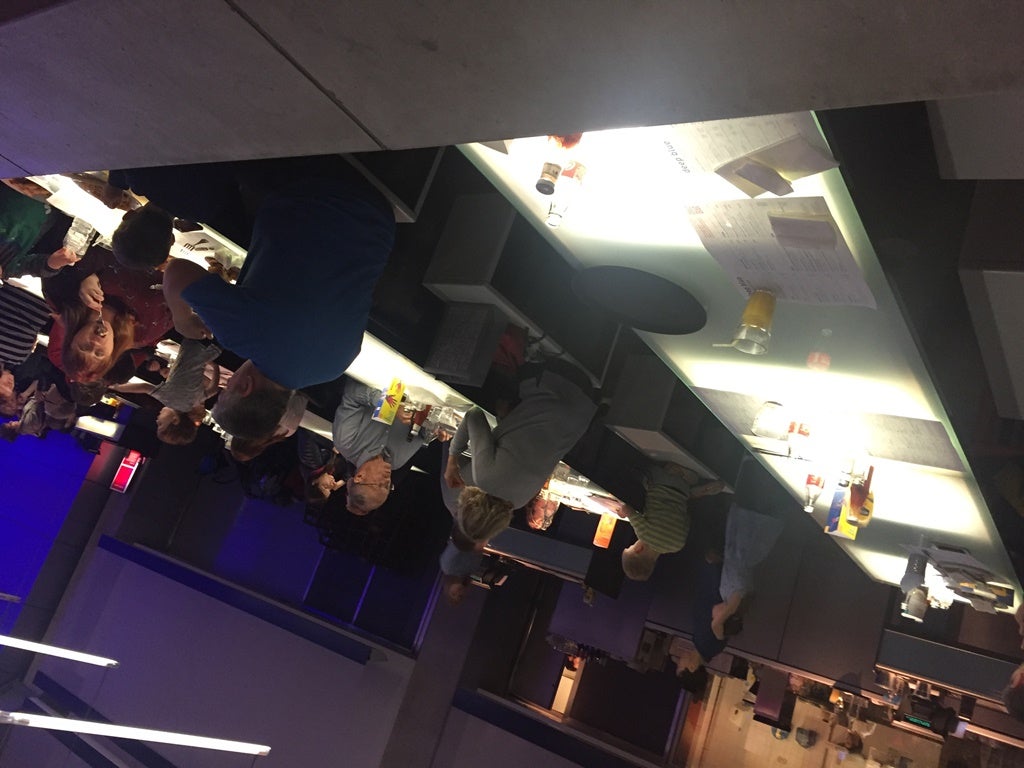
* That’s The Science Museum; the one in London**, for the benefit of all y‘all who’ve forgotten who ‘Murica learned it’s parochialism from.
**No, not London, England. London. There Can Be Only One (TM)
More specifically, here are some things that are particularly cool. Apologies for crappy photo quality (iphone) and random photo orientation (Kinja: FFS, why’s it impossible for them to make it display the same in edit mode as when published?).
Rolls Royce Flying Bedstead -early VTOL testbed. Seen here in action

Short SC1 experimental VTOL aircraft, 1957. 4 vertically mounted RB108 jet engines and one horizontally:
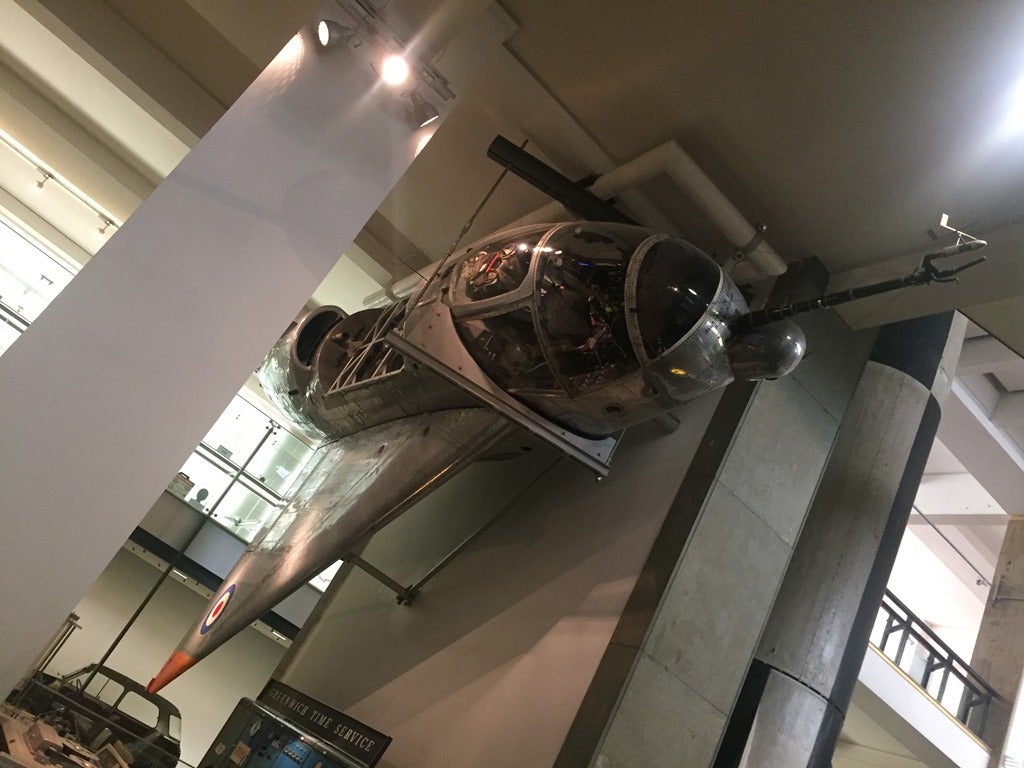
Hawker P1127 first prototype, 1960. As is obvious from its appearance, this was the experimental aircraft daddy of the Harrier:
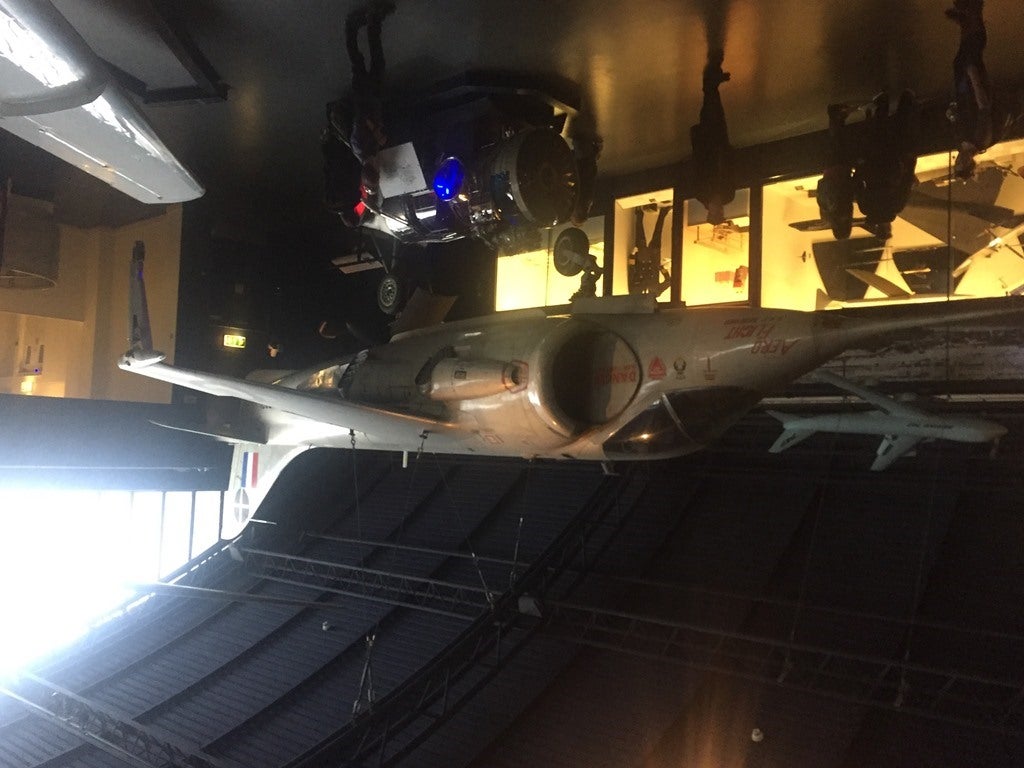
Supermarine S6B seaplane. This aircraft won the Schneider Trophy and set a new absolute speed record of 407.5mph in 1931. Radical features include double-skinned wing and upper float surfaces which act as radiators and the tailplane as an oil cooler, eliminating drag-inducing conventional radiators, plus the then-novel use of countersunk rivets throughout. Visibility for the pilot was obviously regarded as unnecessary. Even shittier iphone photo than the rest- dark hall.
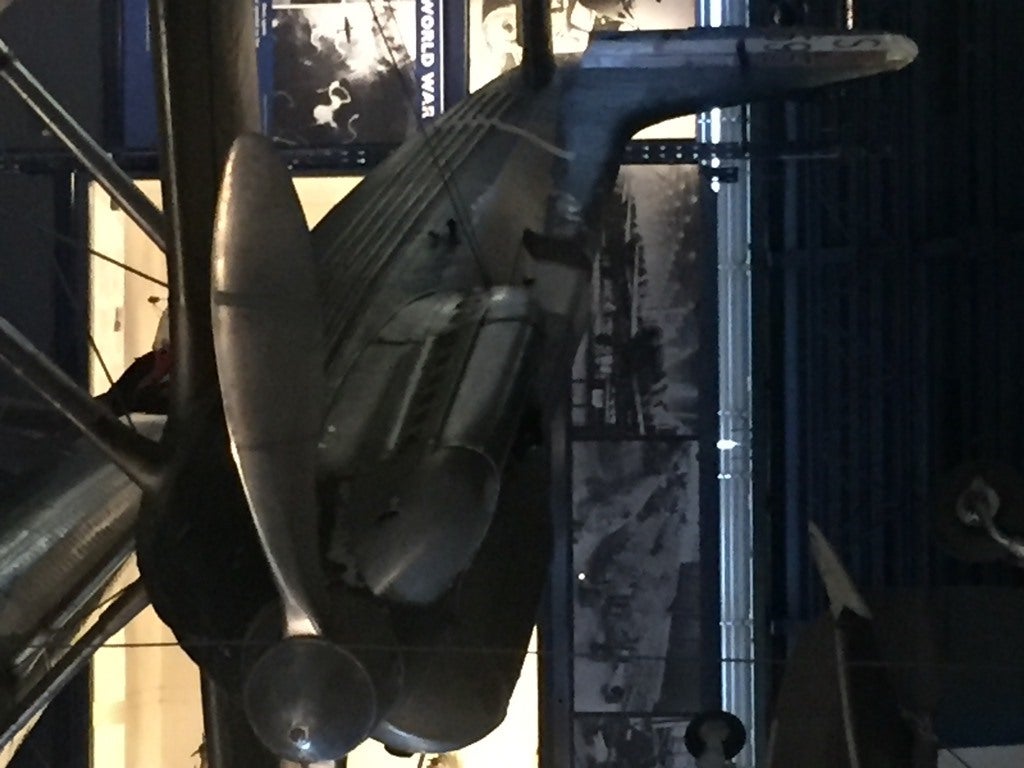
Vicker Vimy bomber. This one made the first non-stop Atlantic crossing, in 1919.

Replica of the Wright Flyer. Notable not for itself, but for the backstory. The original Flyer lived in the Science Museum from the ‘20s to ‘40s, after Orville Wright had a falling out with the Smithsonian. It was returned to the US when they published a retraction of the paper which had offended him, but he invited the Science Museum to make a copy from the original before returning it.

Gloster E28/39 prototype, 1941. The first allied jet aircraft to fly:
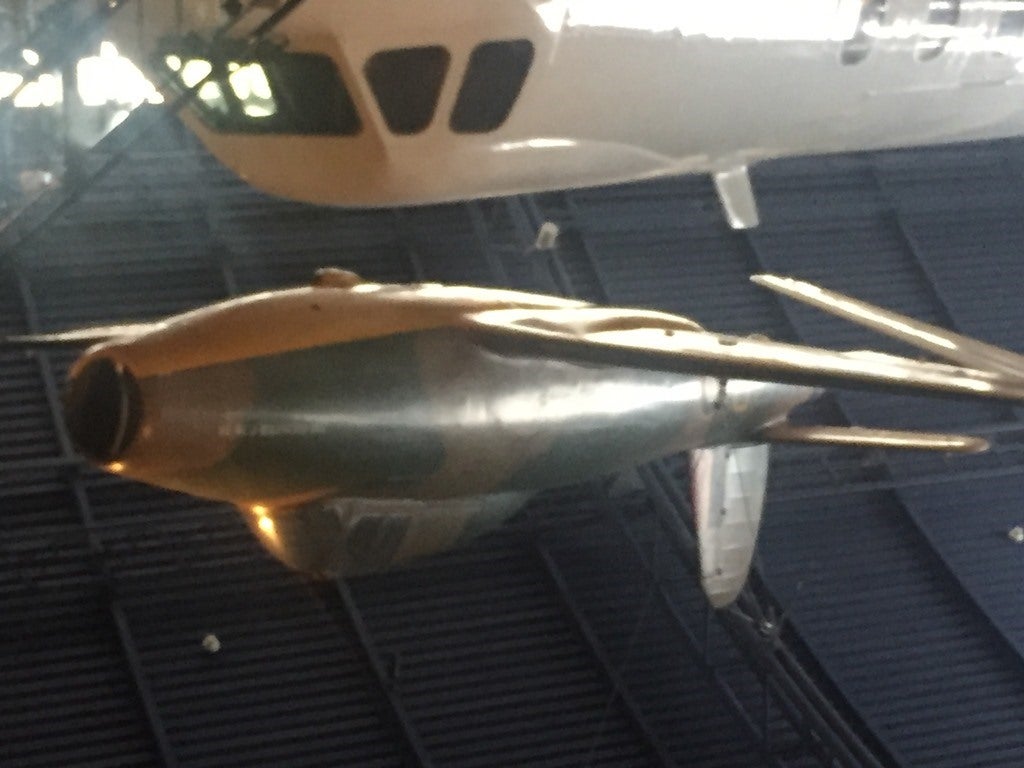
Whittle centrifugal jet engine:
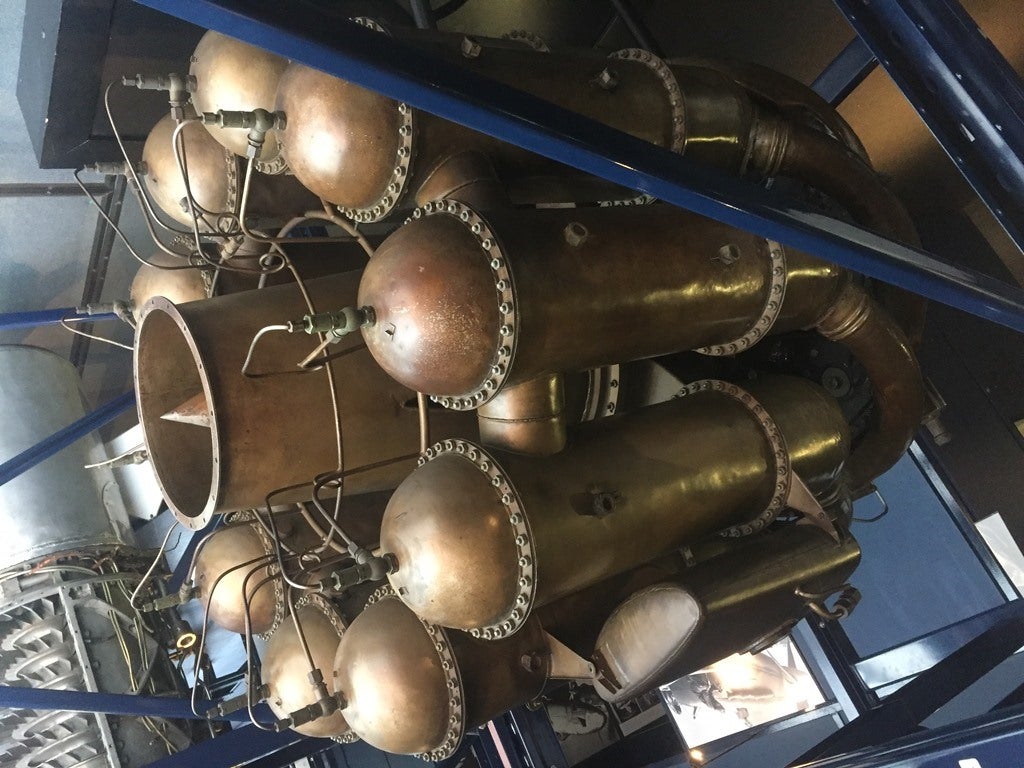
Various experimental axial-flow compressor used at RAE to evaluate jet engine designs in the 1930s - well before the Whittle engine flew:
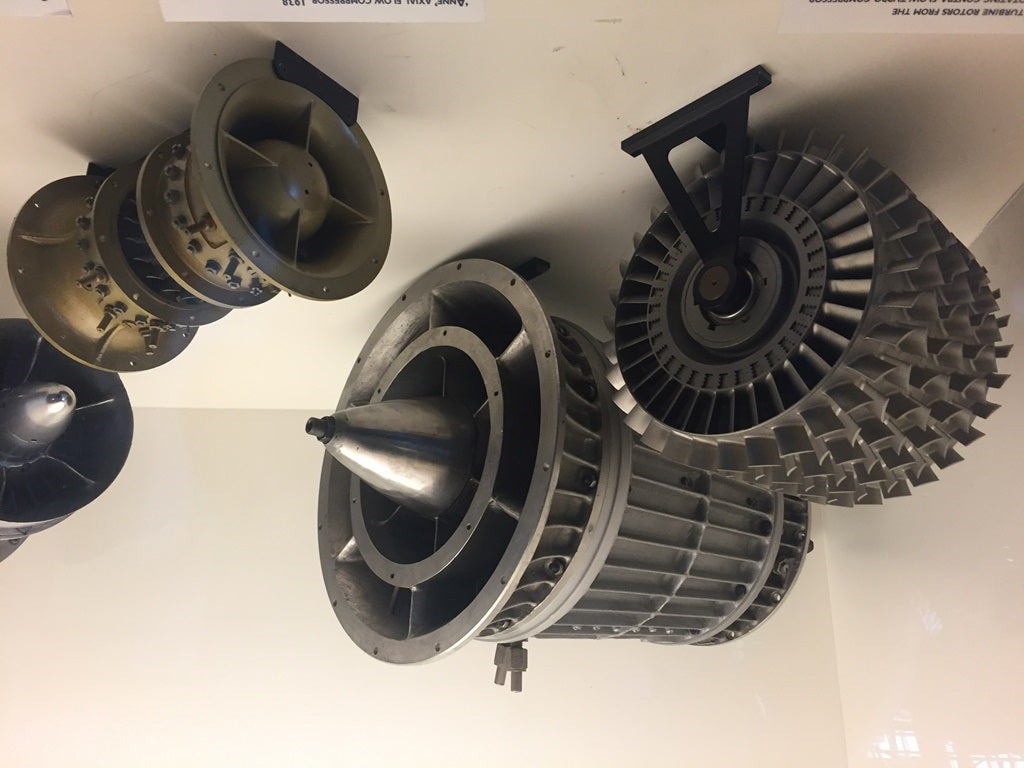
Assorted wind tunnel models used in the development of Concorde:
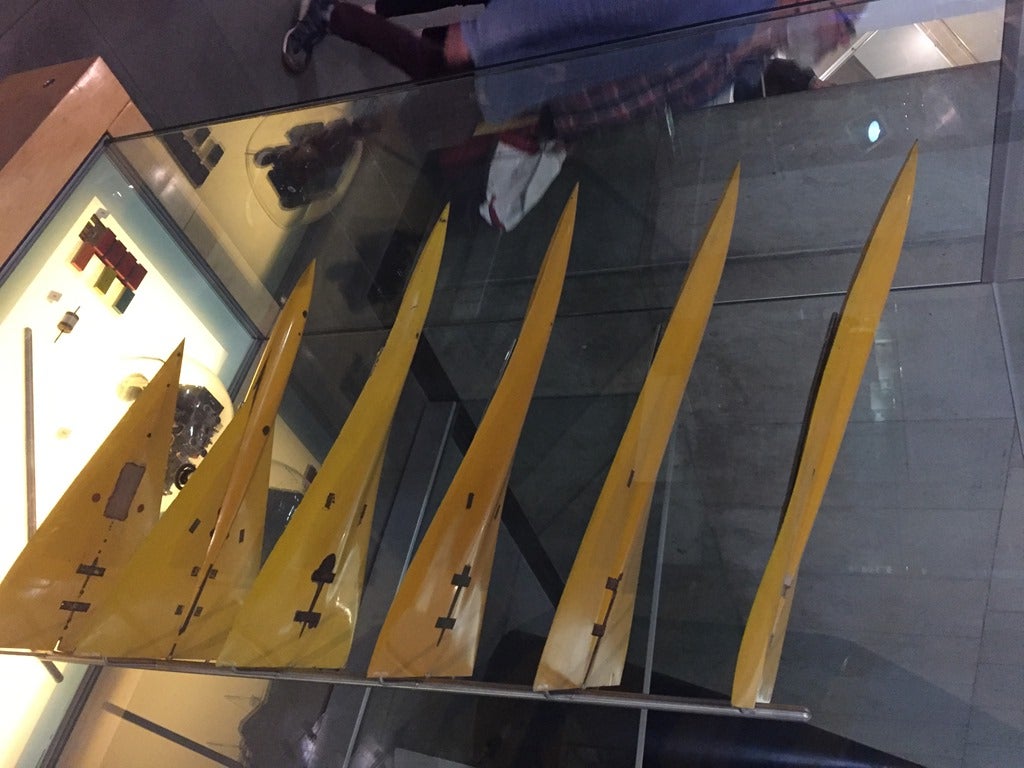
And on the theme of fluid dynamics, two different-scale pairs of hull models used by William Froude to define the scale laws which allow tank testing in naval architecture - and incidentally, to show that a bulbous bow has lower drag than a sharp one on large fast ships, leading to the now-ubiquitous cargo ship dolphin beak.
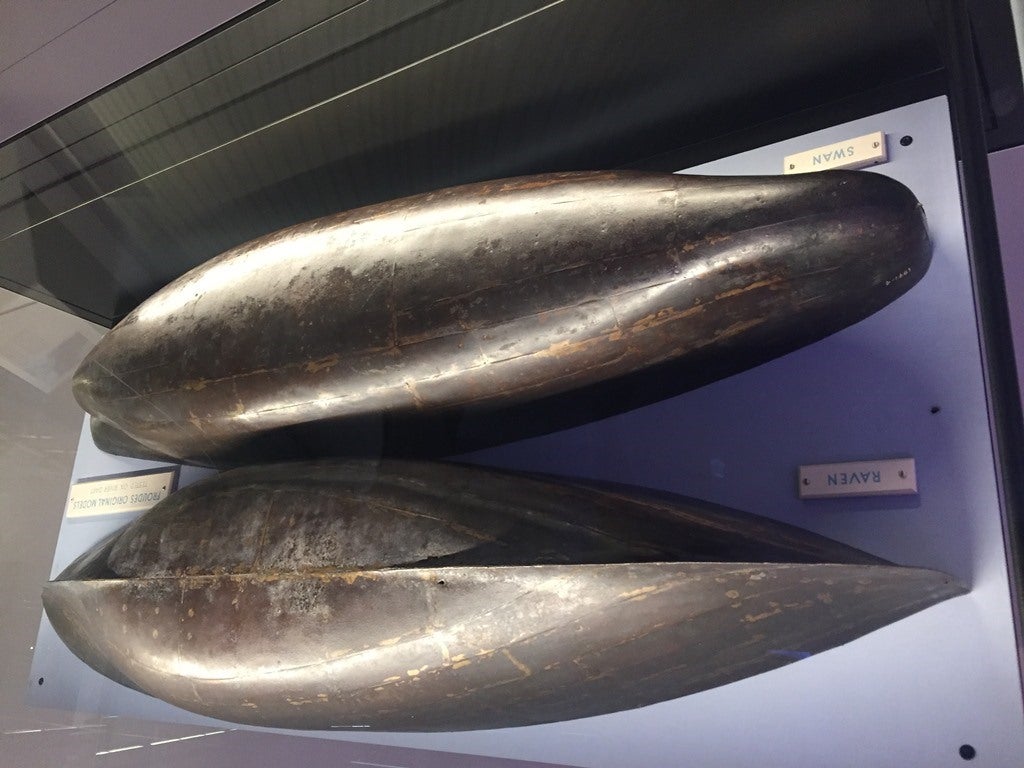
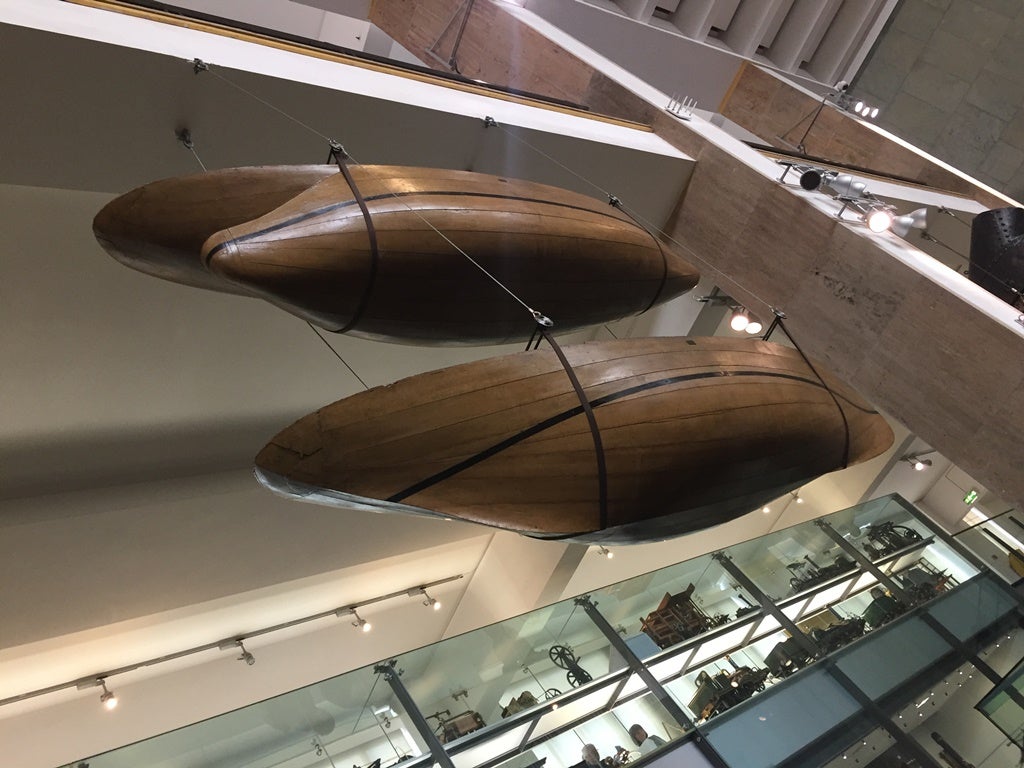
Radar receiver, 1935. Part of the experimental radar device first used to successfully detect an aircraft in flight. Interestingly, the receiver itself is a bog-standard device; they were in common use in the 1930s for measuring shortwave radio reception conditions:
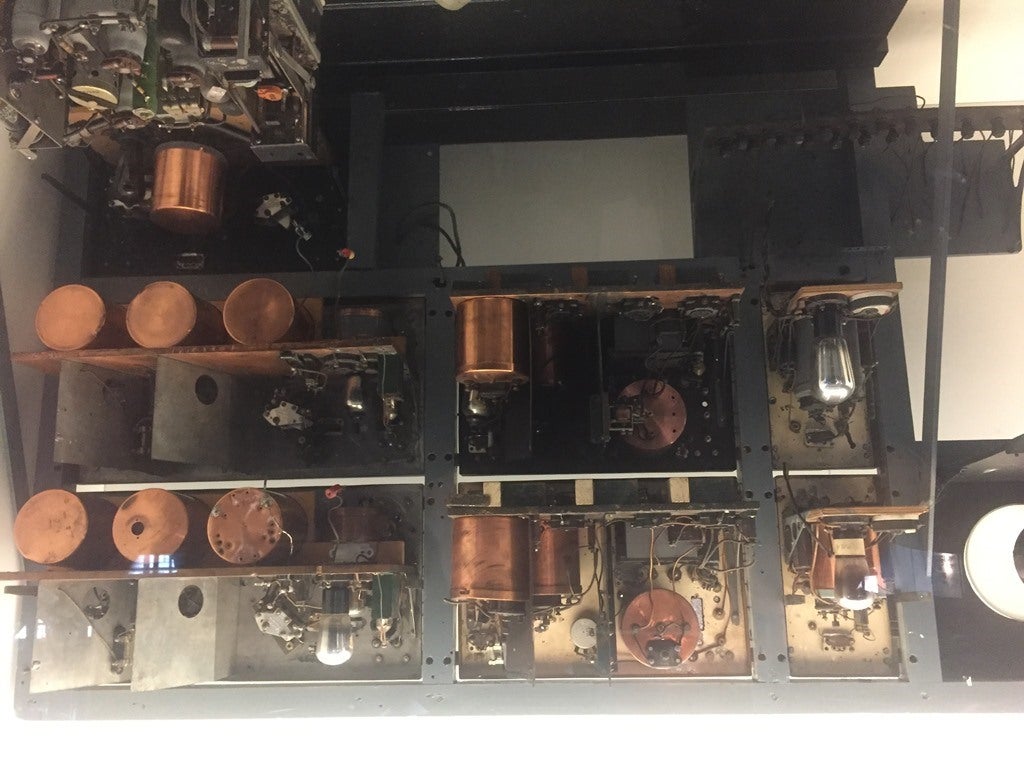
The first hovercraft; Christopher Cockerell’s first experimental model, 1955. Powered by a 5cc model aircraft engine. Unlike the full-scale devices he developed later, it has no skirt, only slots around the periphery of the lower surface:
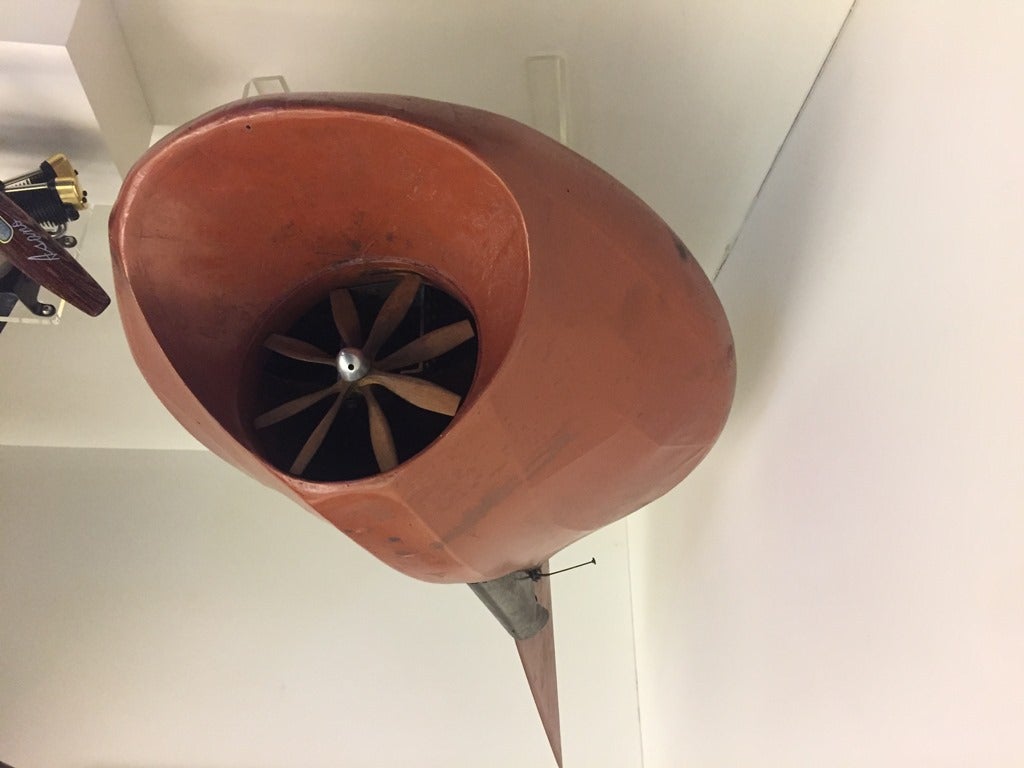
Rover Jet1 turbine car, 1950. World’s first gas-turbine powered car. Achieved a speed of 152mph in 1952:
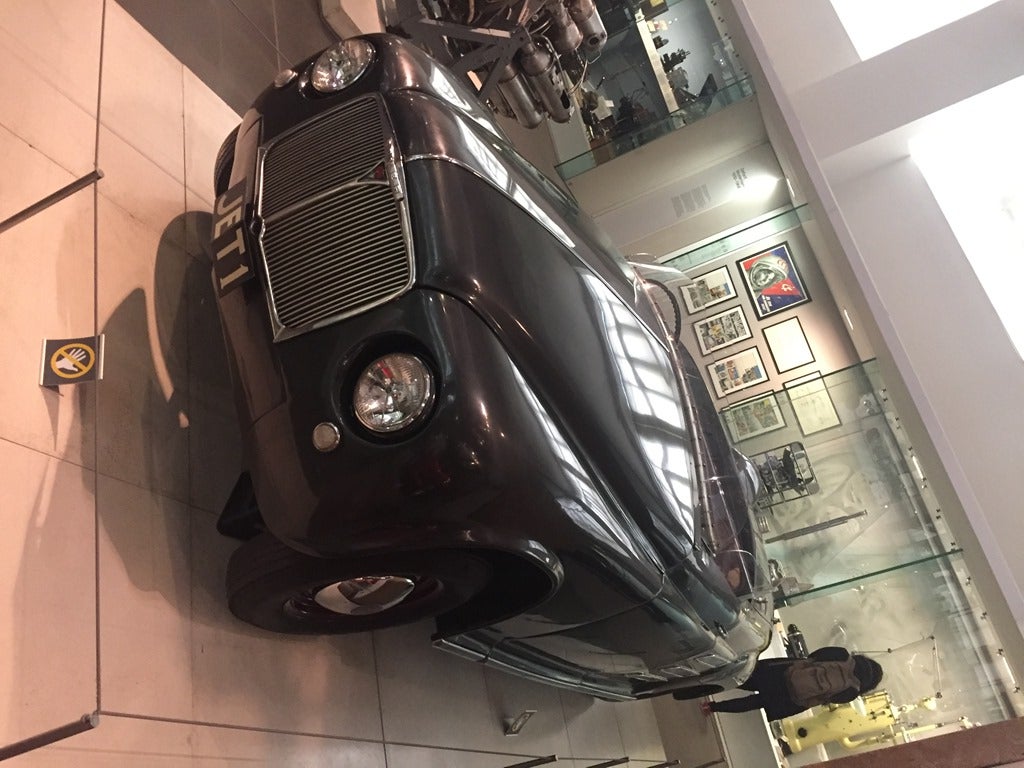
The world’s first steam turbine, Charles Parsons’ prototype of 1884. A scaled up version of this would later power the revolutionary Turbinia. (Turbinia herself is in Newcastle):
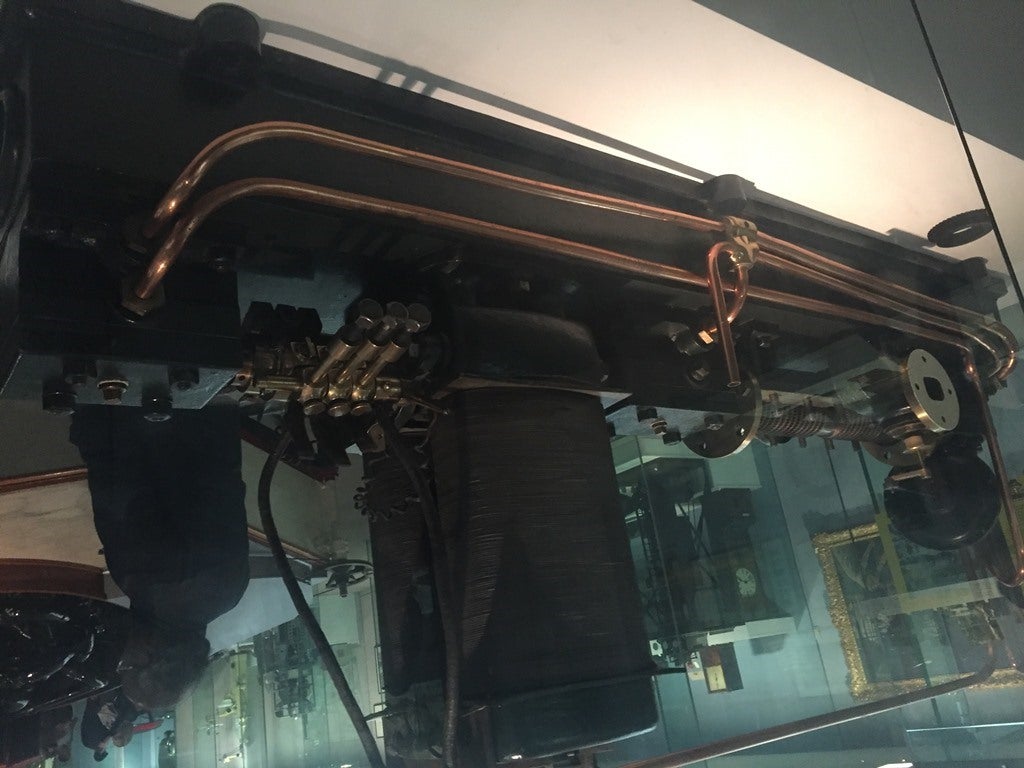
75kW Parsons steam turbine electric genset, 1891. By only 8 years after its invention, the steam turbine was in commercial use, thanks to the simplicity and inherent reliability of the turbine engine. This was one of 3 installed in a power station in Cambridge, and ran for 30 years:
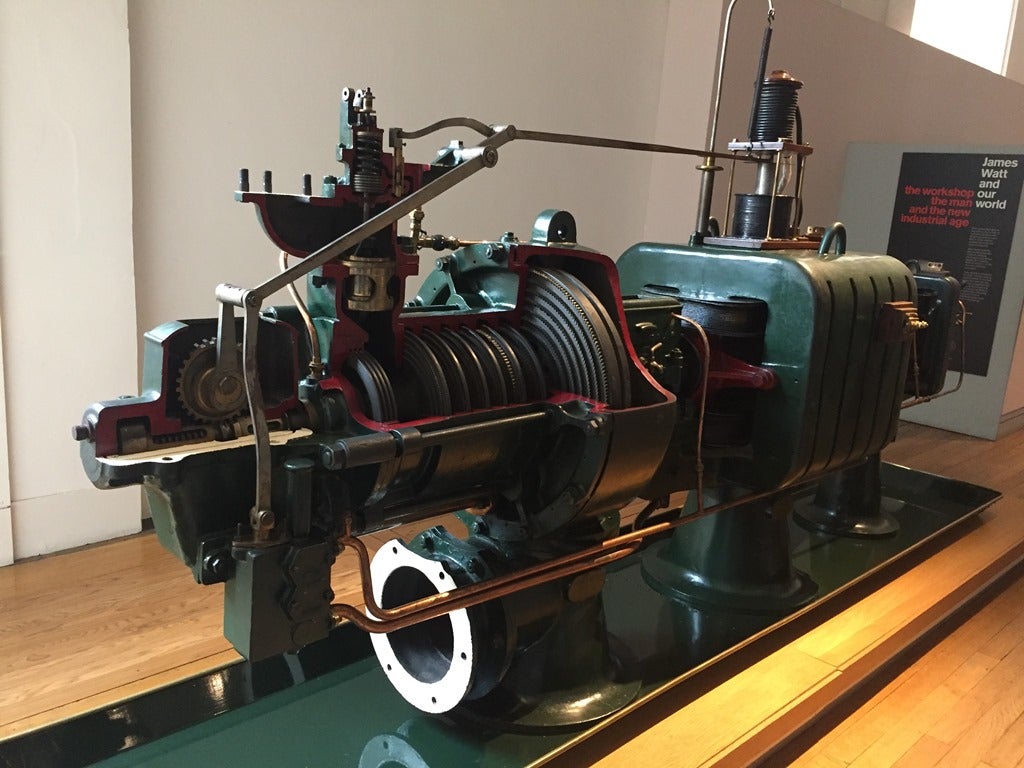
Newcomen-type atmospheric pumping engine, 1791. (they have LOTS of steam stuff, here in the heart of the industrial revolution). Newcomen engines were the earliest practical method of harnessing work from steam; this is the oldest surviving un-bastardized one, but also one of the last ones made, as by the late 1700s they’d been obsoleted by (and existing ones were being converted to) Watt type engines.
They work by injecting atmospheric-pressure steam into the (massive) cylinder, then letting it condense, forming a vacuum which pulled the piston down. Hopelessly inefficient, but reliable due to the low stresses. This one was in service for 127 years:
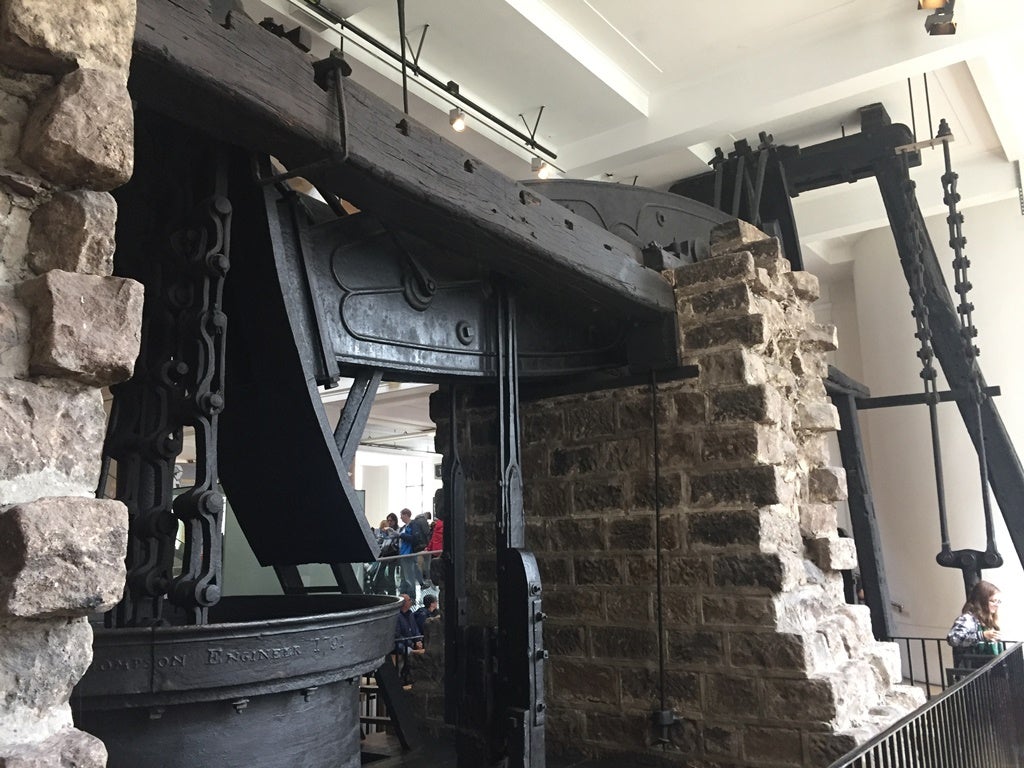
Boulton and Watt steam engine, “Old Bess”, 1777. Only the second commercial steam engine built by James Watt. Used as an experimental test bed for steam engine design, before being installed in a pumping station. During the experimental phase it earned itself the name “Beelzebub” due to its violent and unpredictable nature: “Old Bess” came a long time later:
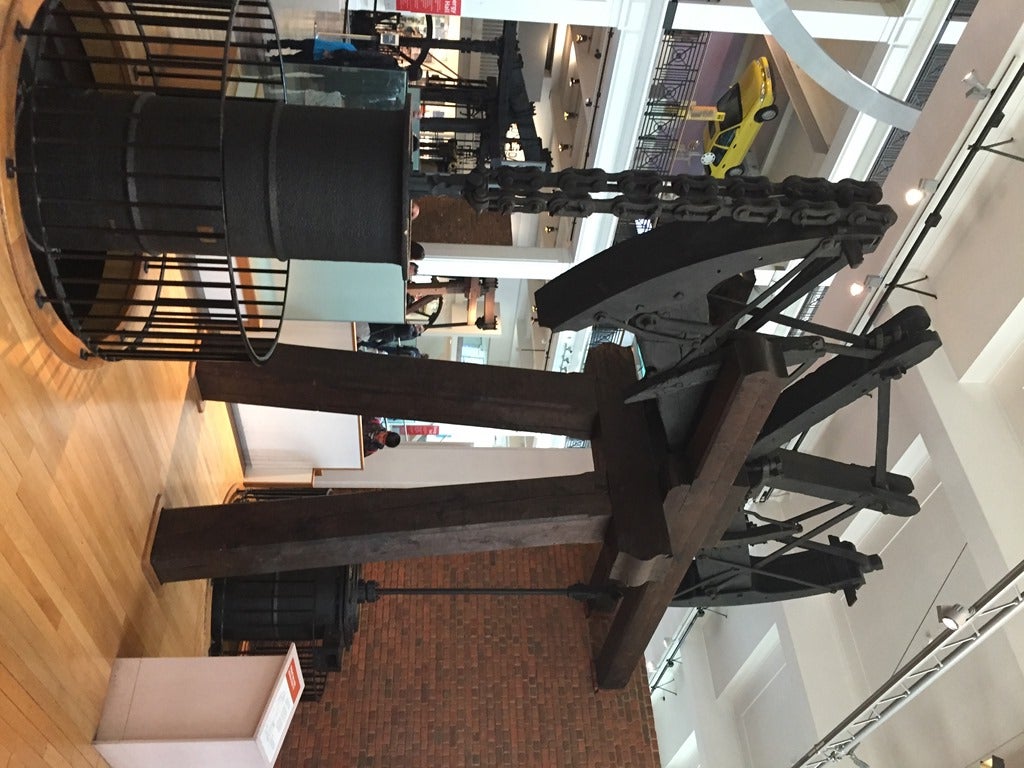
“Puffing Billy” 1814 :the oldest surviving steam locomotive, used for hauling coal wagons from mine to port. They also apparently have Stephenson’s Rocket somewhere, but I never fell over it:
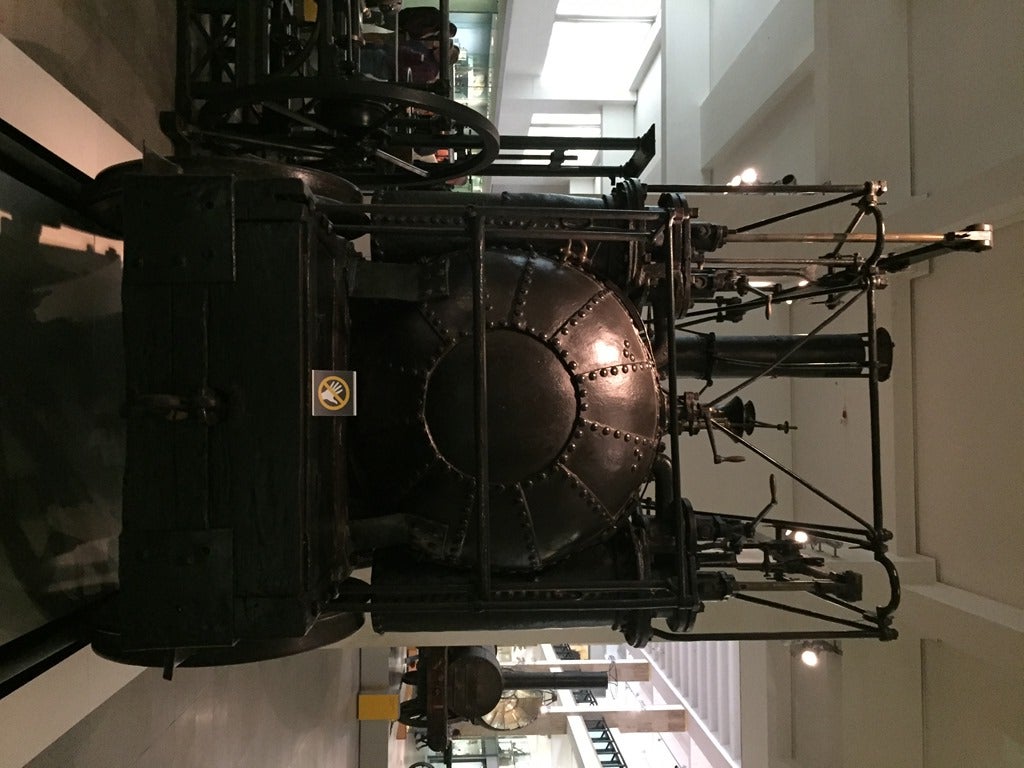
Maudsley “table” engine (1840, though they were in production as early as 1807). Compact self-contained steam engines like this democratised the Industrial Revolution, as you could add power to any old workshop, or even machine, without needing to build a whole building round a single engine:
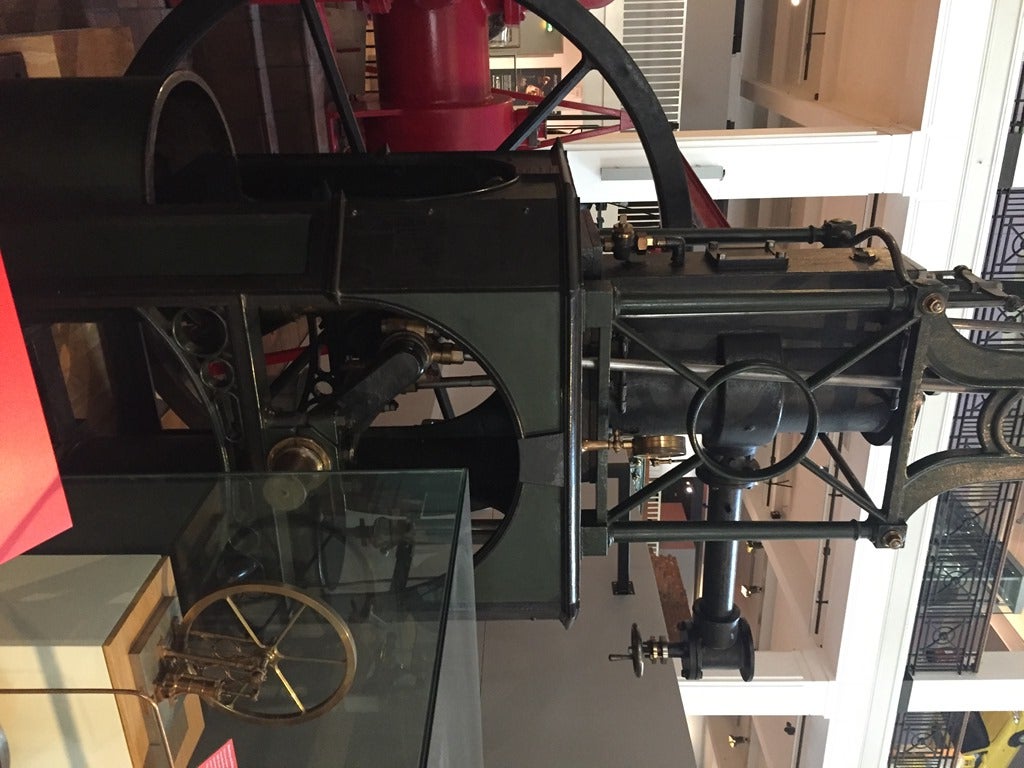
Working scale model of what a steam-powered machine shop looked like if you DIDN’T have a tabletop engine or three:
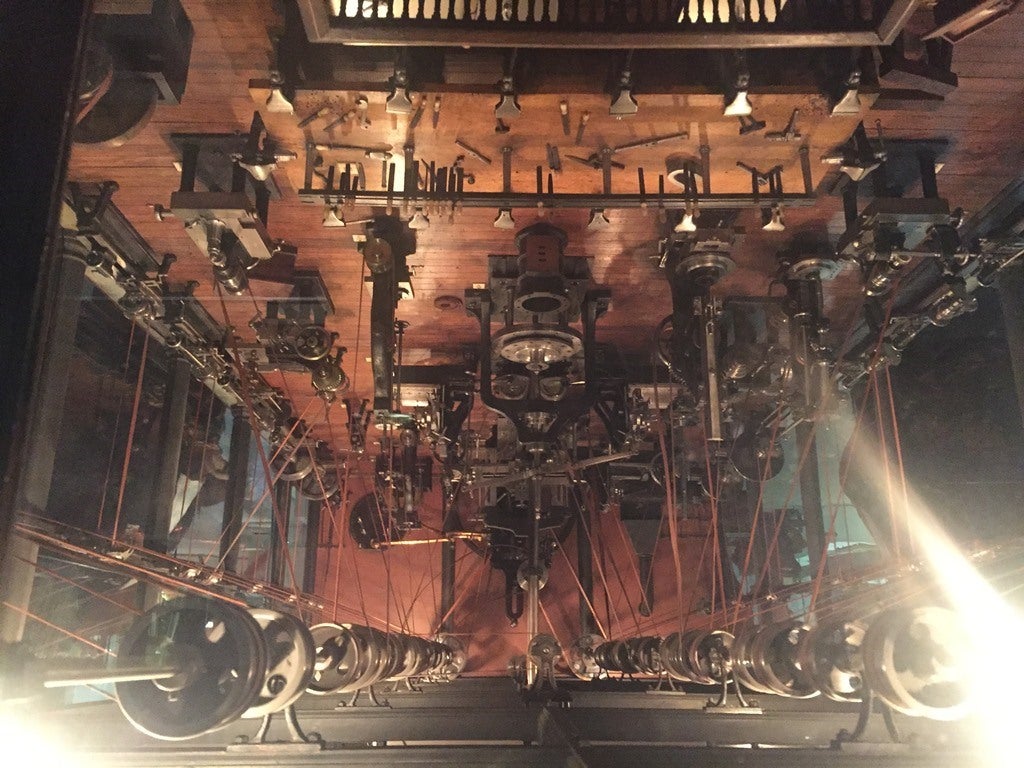
Burnley Ironworks Company (and is that not a name from Terry Pratchett) mill engine, 1903. In service till as recently as 1970:

Now, moving on from steam to actual science (SCIENCE!):
Watson & Crick’s original model of DNA, 1953:
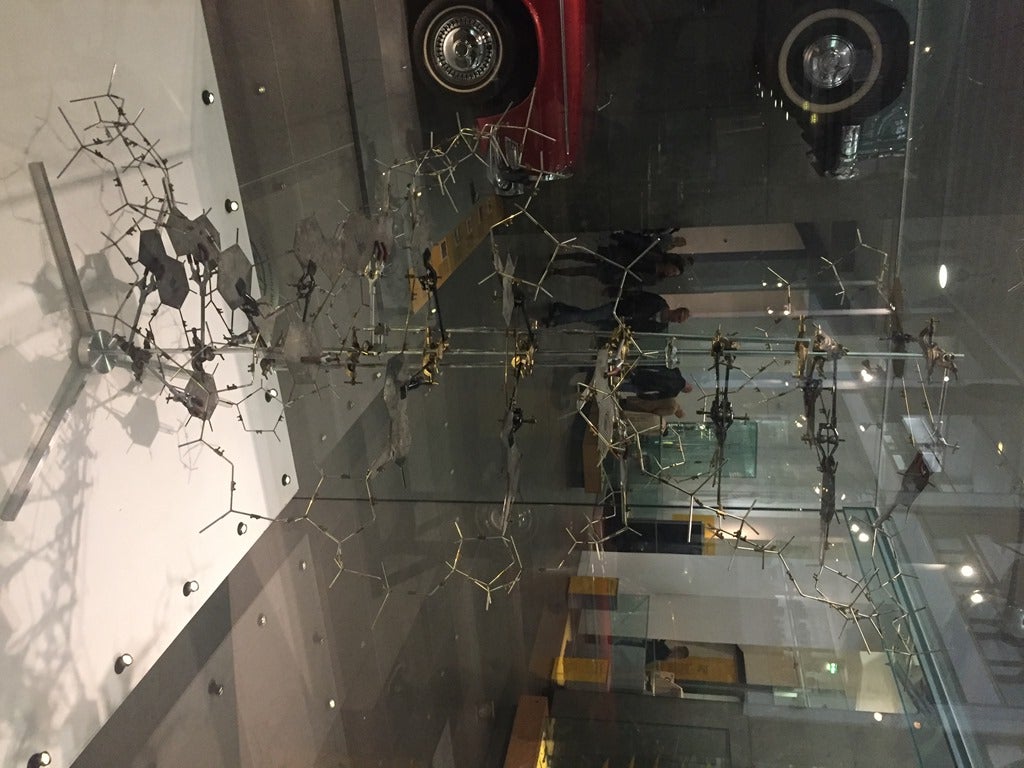
OK, enough Science. back to Engineering. Whatever they call it, this is actually an Engineering Museum anyway.
Babbage’s Difference Engine no. 1, 1832. Babbage never built a complete difference engine, though he burnt two ships-of-the-lines’ worth of His Majesty’s cash trying, and there is some debate whether it would have been technically possible with the manufacturing capability of the time. This is as far as he got. The Science Museum also has one of two working modern reproductions of a full Difference Engine in the world, though I didn’t get a photo.
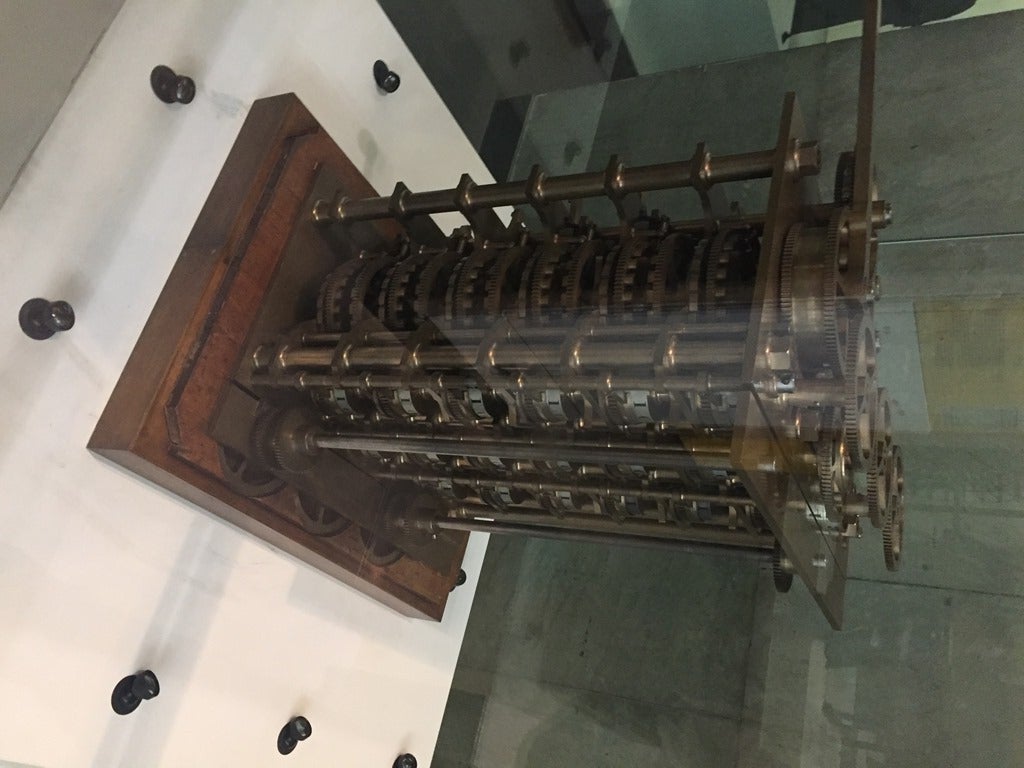
Manchester University mechanical Differential Analyser, 1933. Used for solving differential equations. Invented at MIT in 1929, this was the first one built outside the US. By a year or two later these were being built in respectable numbers - largely out of Meccano - and used for various scientific and military purposes, including the Manhattan Project. At one point Man U had as many as 100 differential analyser operators working in shifts:
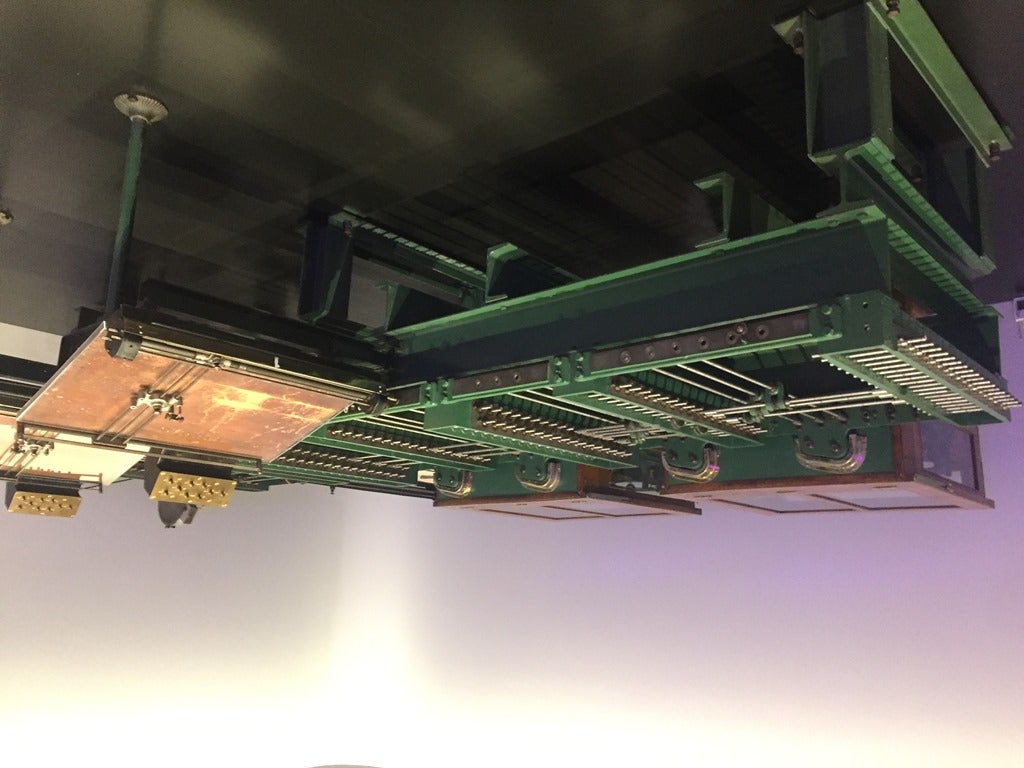
Dog racing Totalisator, 1933. If you’ve ever placed a bet at the TAB (which I think is only an Australasian thing; it’s an (oroginally) government controlled bookmaking agency), this is, or was, the “T”. Its a mechanical device for adjusting betting odds in real time based on how many people have bet which way, ensuring nobody gets ripped off but the house never loses.
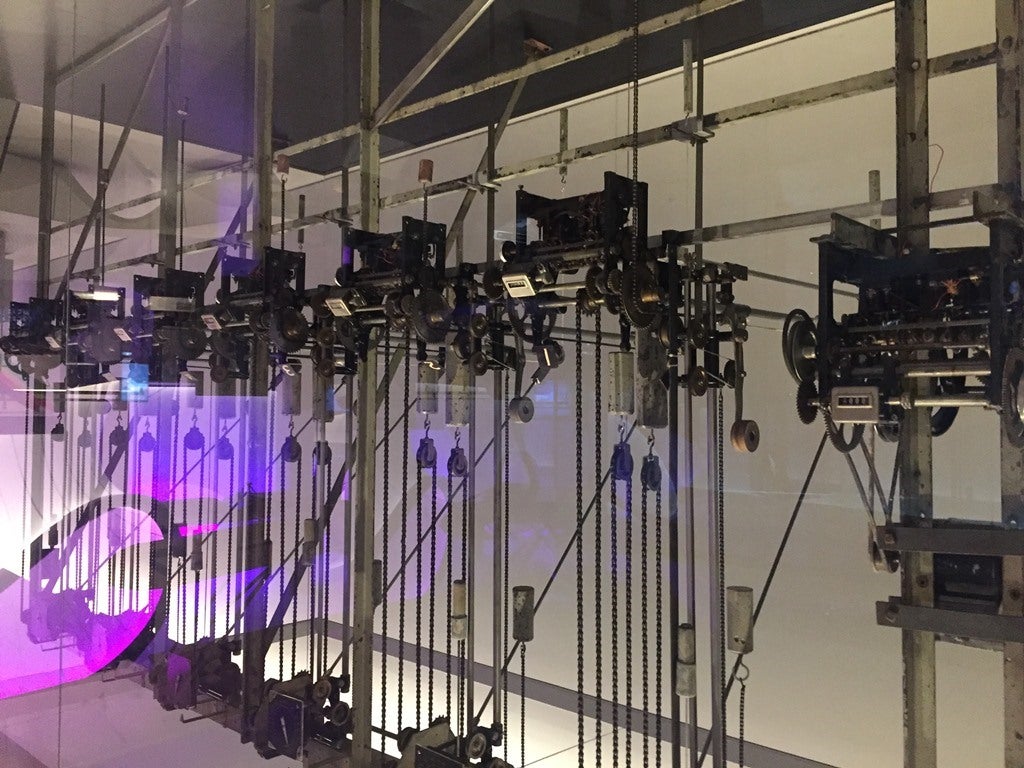
Control Data Corporation CDC6600, 1968; one of the first line of successful supercomputers which cemented Seymour Cray’s reputation as a computer design genius:
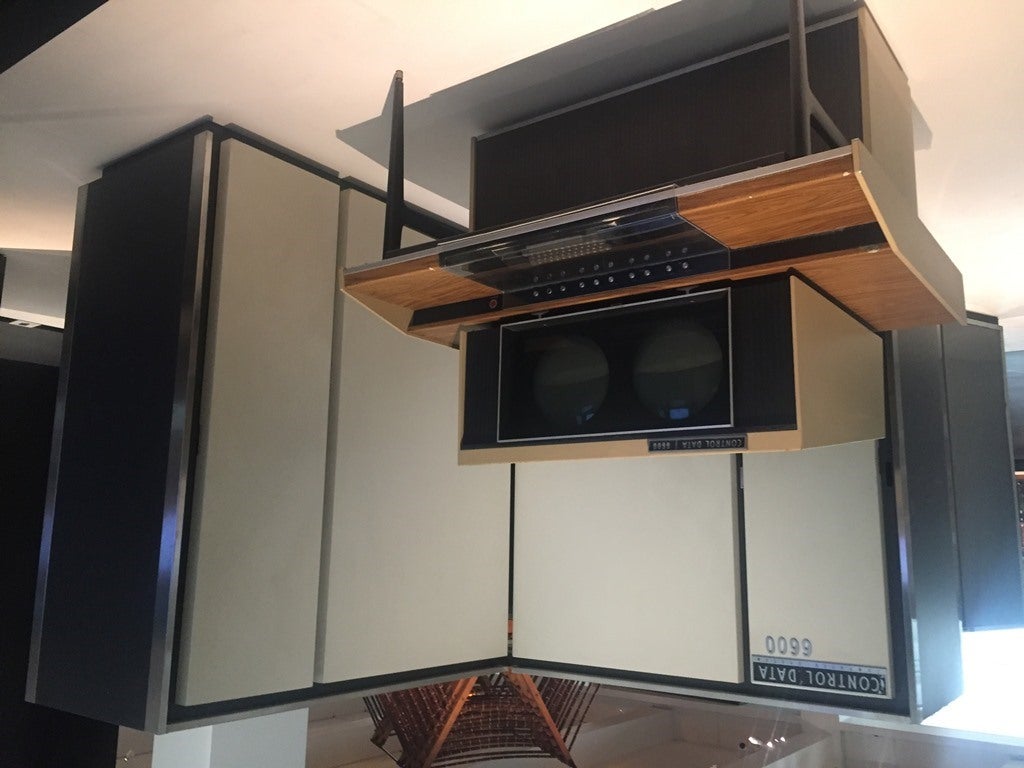
Soviet BESM-6 supercomputer, 1965. Due to Russia having some worldbeating mathematical brains to offset their lag in electronics technology, this contraption was roughly equivalent in performance to the CDC unit above, despite the CDC being about 3 times faster in pure hardware terms.

Next computer, 1999. This is Tim Berners-Lee’s machine on which he wrote the original code for the world wide web, and created and hosted the first website. His boss at CERN apparently described his research proposal as “vague” but gave him a computer to play on anyway, because what the heck. So that worked out OK...

Silicon Graphics Onyx RealityEngine 2. Cool not because of any historical significance, but because (a) RealityEngine is the coolest name ever, and (b) I remember when the university I was at got one of these to replace their VAX cluster for CAD and FEA work. Jeez, was it fast! Nowadays my garage door opener probably has more CPU power:
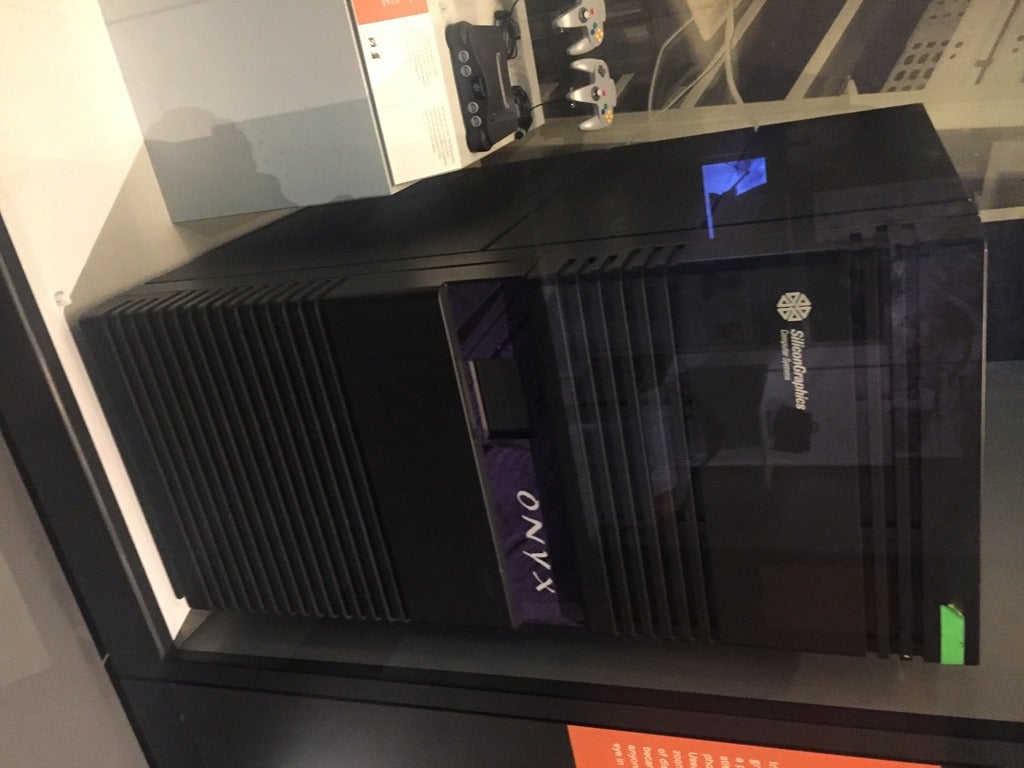
Acorn RISC Machines (ARM) ARM1 CPU, 1985. The great grandaddy of the CPU that’s in every smart device you own: ARM cores are miles and away the dominant embedded architecture nowadays. I had an BBC Archimedes PC with one of these in it - fastest micro in the world at the time, and one of the first 32 bit PCs:
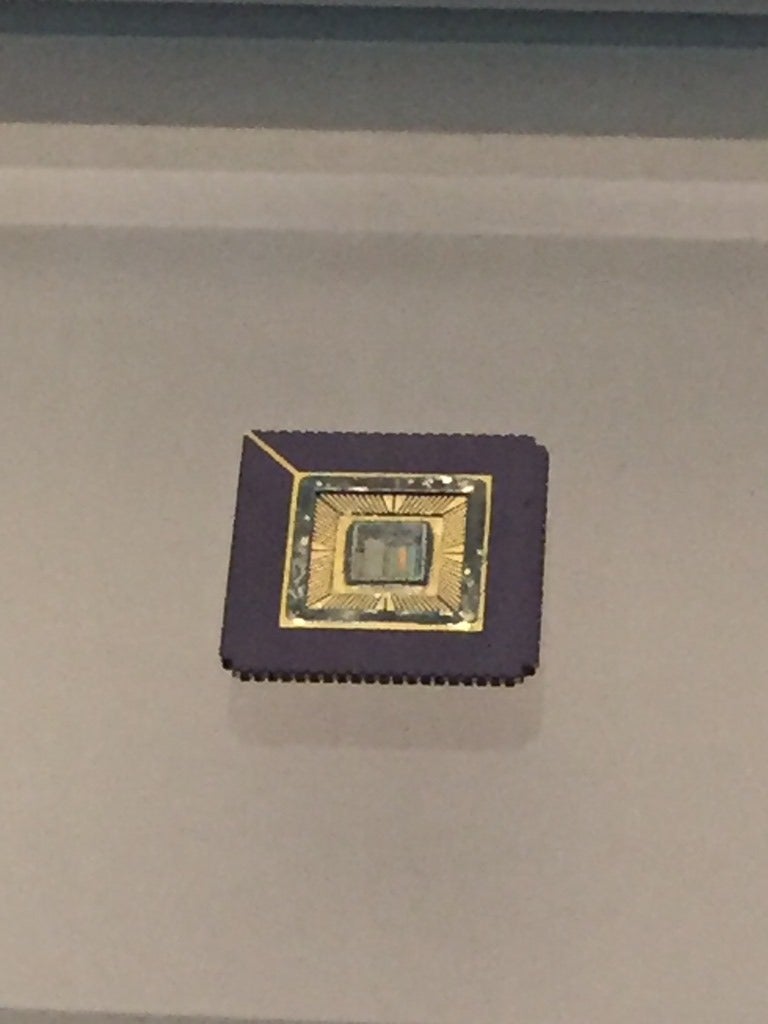
On the other hand, the world’s first silicon-based (and therefore mass manufacturable with current technologies) quantum computing chip (University of Bristol, 2012) has genuine significance, even if it doesn’t look like much - the chip itself is barely visible even if my photo was in focus:

First successful (i.e. better than existing technology) atomic clock, 1955. Accurate to 1 second per 300 years, despite looking like something from the industrial revolution:

1970 atomic clock which was used at Greenwich Observatory for 25 years, providing one of the world’s reference time signals (UTC is actually defined from an average of reference clocks, but GMT came from this thing):
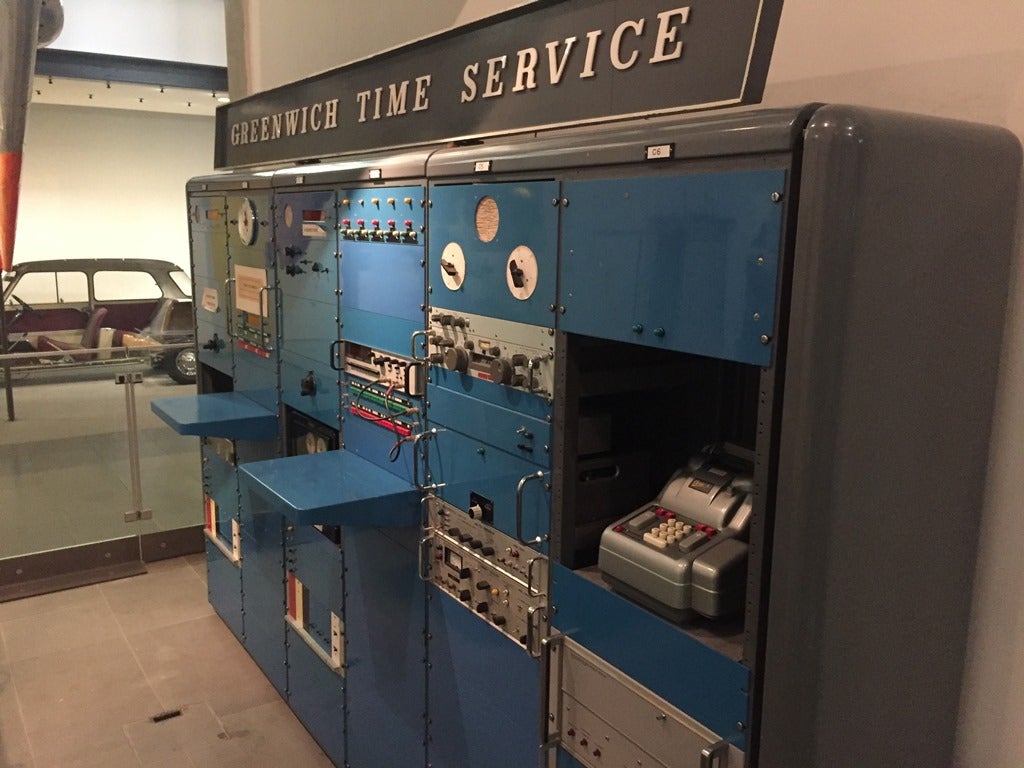
EMI Computerised Tomography brain Scanner, 1980 - one of the first commercially available CT machines. EMI used their profits from the Beatles to venture into medical device technology, including being early investors in CT technology. Didn’t do them much good though, they bailed out of medical technology within a decade. In the background, Aberdeen MRI scanner, 1983. Medical use of MRIs was pioneered by Aberdeen University in the early 80s - this one was used to take the first medically useful scan of a live patient.
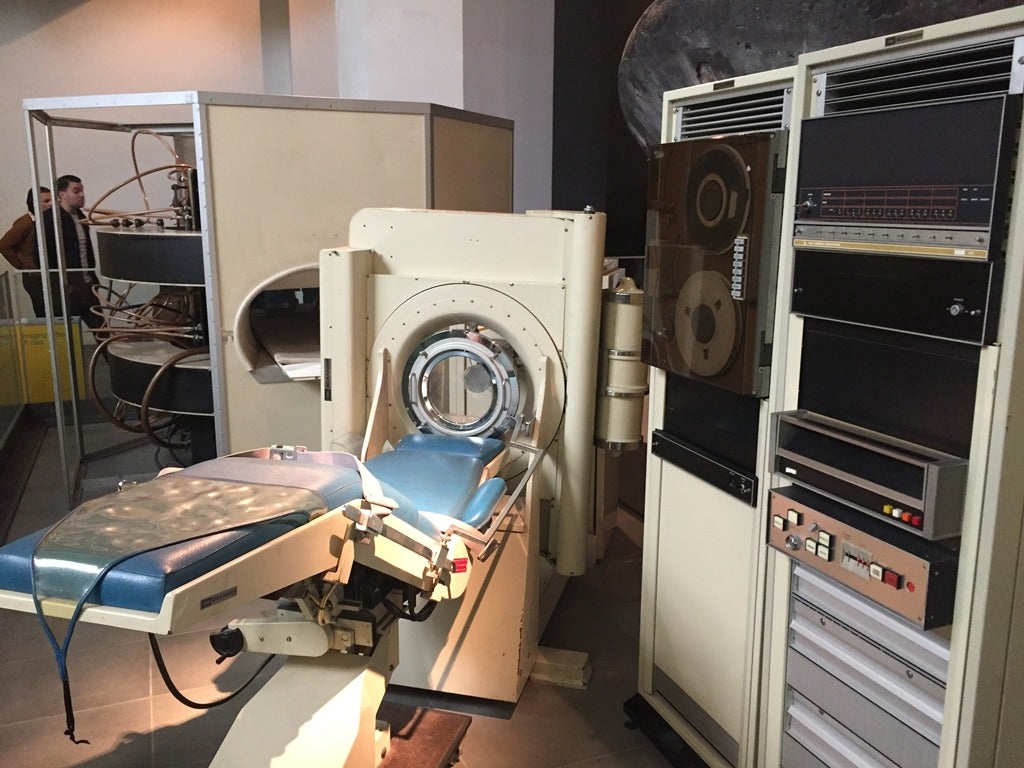
Genemsco Home Cloning Kit, 1994. Used for teaching the user how to clone bacteria, because how could that possibly go wrong. Yes, this was a commercially available product from the mid 1980s; Genemsco’s slogan was “Genetic Engineering Means Planetary Survival”. We are living in Sci-Fi times. Or as William Gibson puts it: “ The future is here. It’s just not evenly distributed ”.
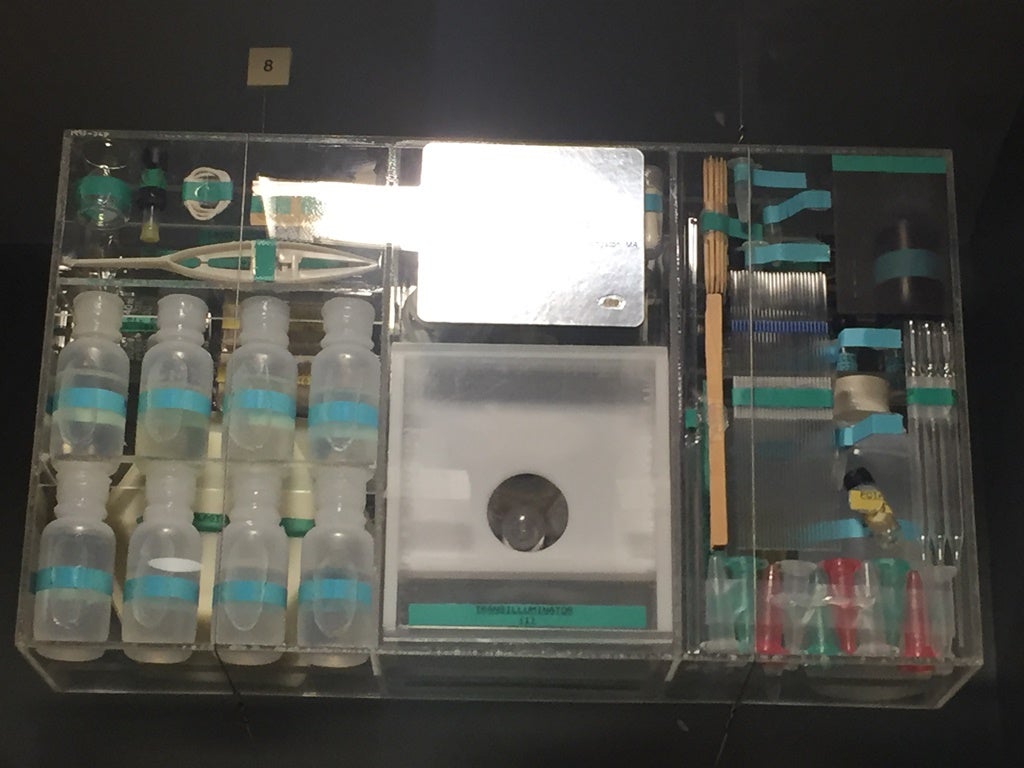
And if the future is too much for you: Euthanasia machine, 1995, developed by Dr Philip Nitschke and used several times in Australia’s Northern Territory. I’m actually surprised this one is here not in Oz, as it’s a significant part of their social history. For the record, suicide is still legal in the Northern Territory, but assisting it is not, after the federal government overruled local legislation. NT courts, however, typically side with the local public consensus and impose suspended sentences on caregivers who assist in euthanasia.
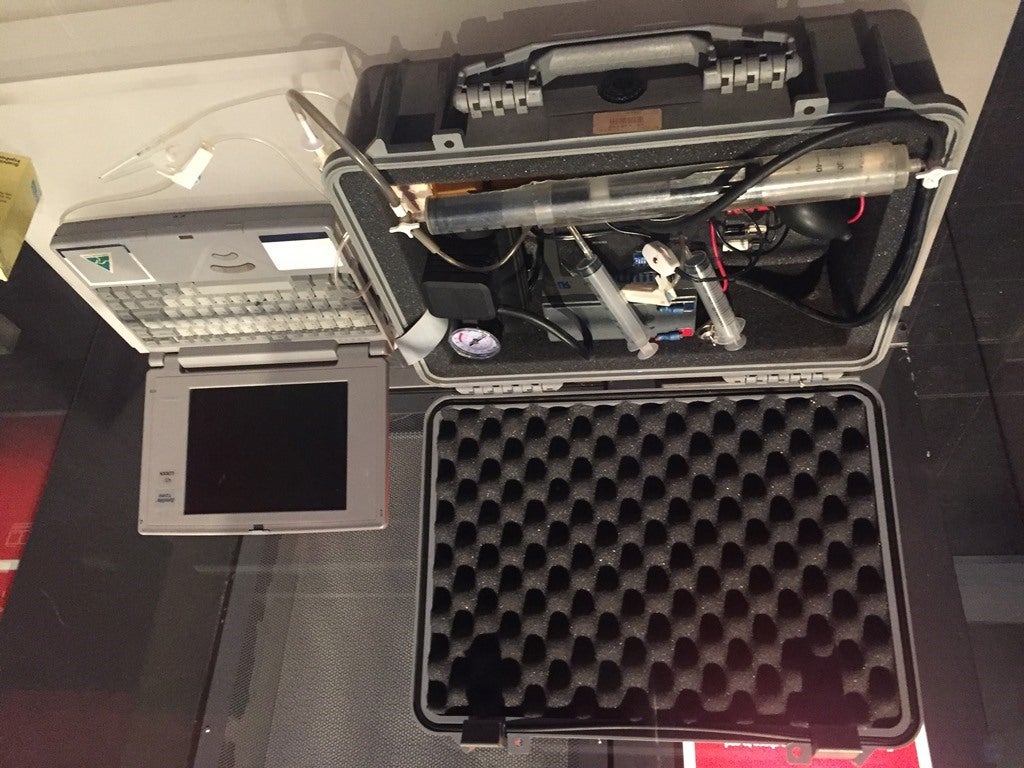
And to end on a more positive note: first prototype of the Clock of the Long Now, a mechanical clock intended to keep time for 10,000 years. This prototype was first wound on December 31st, 1999, just in time to strike in the new millenium. The full scale (i.e. architectural size - visitors will get to wander round inside it) is currently under construction under a mountain in west Texas. Which is kinda cool, if totally mad.

The place is well worth a visit if you’re in London, even if it’s overshadowed by its neighbour the Natural History Museum.
 "TheTurbochargedSquirrel" (thatsquirrel)
"TheTurbochargedSquirrel" (thatsquirrel)
06/03/2017 at 19:56, STARS: 3
Woah, they have anti-gravity at the science museum.
 "PS9" (PS9)
"PS9" (PS9)
06/03/2017 at 20:28, STARS: 2
I see everything’s going well at the Australian science museum.
 "ADabOfOppo; Gone Plaid (Instructables Can Be Confusable)" (adabofoppo)
"ADabOfOppo; Gone Plaid (Instructables Can Be Confusable)" (adabofoppo)
06/03/2017 at 21:16, STARS: 2
The Smithsonian had retracted that ‘offending’ paper well before the 1940s, however due to some small, local violence it was decided that the Flyer would remain at the museum until after that little European conflict was resolved. The transfer did however require a letter from Orville to happen and he almost didn’t write it before he died.